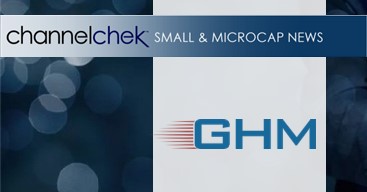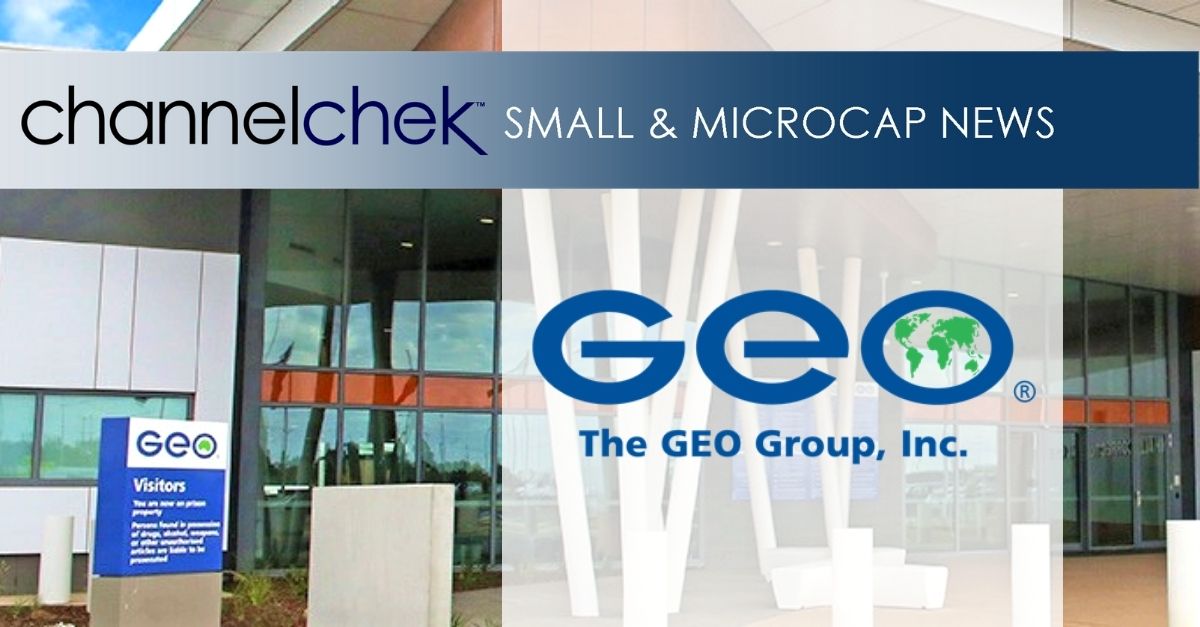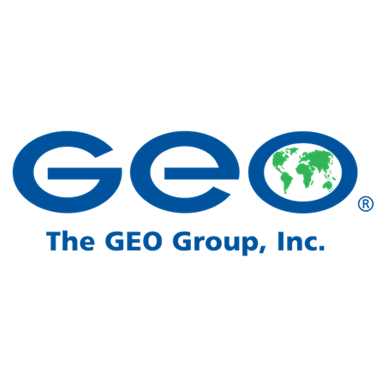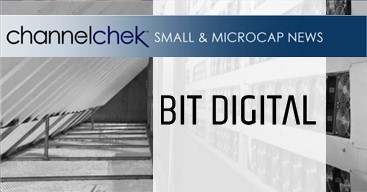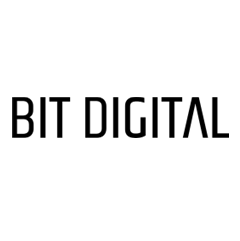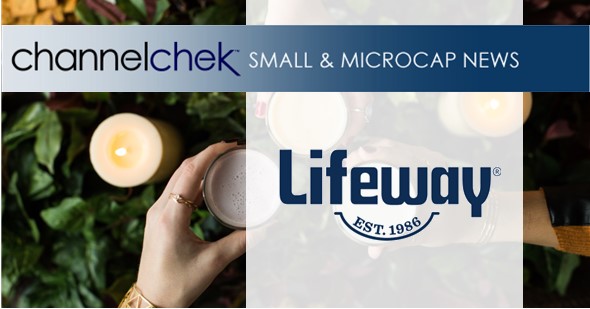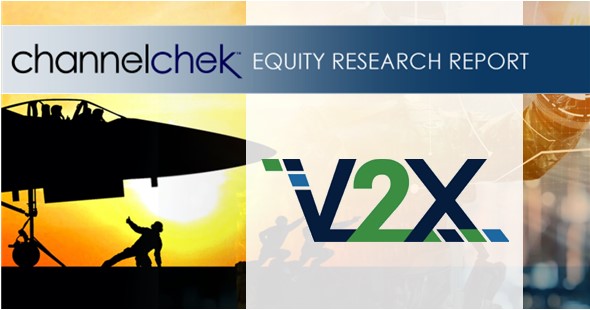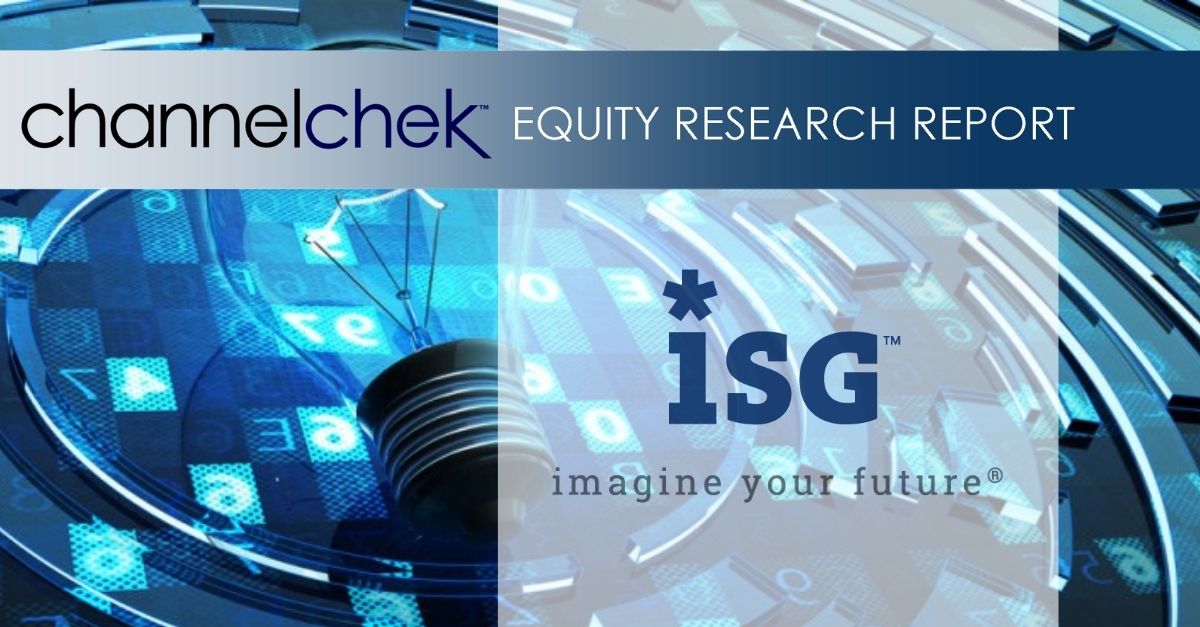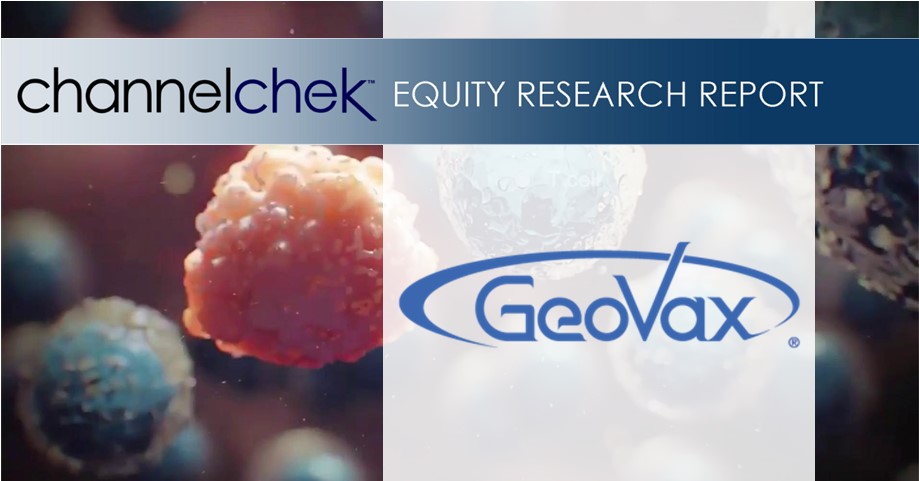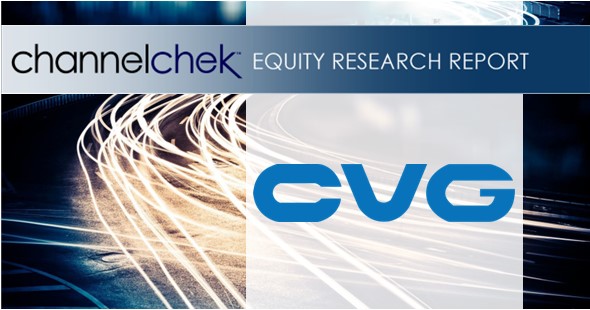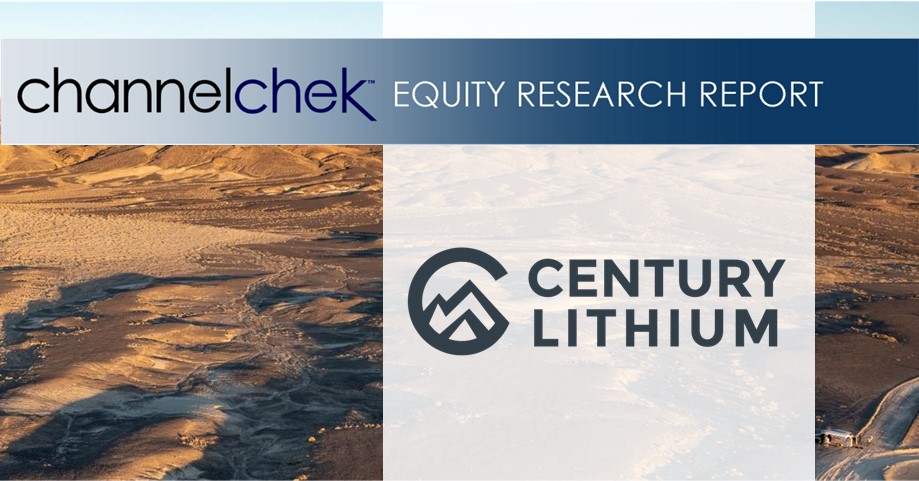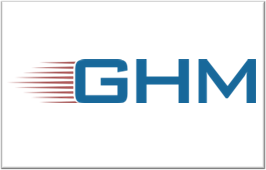
Research News and Market Data on GHM
- Strong financial results further validates solid execution of strategic initiatives to grow and drive stronger earnings power
- Revenue up 5% to a record $50.0 million reflecting strength in defense and refining; gross margin expanded 170 basis points to 24.8%
- Net income increased 12% to $3.0 million for net margin of 5.9%, adjusted net income1 was up 20% to $3.6 million and adjusted EBITDA1 was $5.1 million, or 10.3% of sales
- Orders of $55.8 million driven by defense market and international demand, resulted in a book-to-bill ratio of 1.1x and nearly $400 million in backlog2
- Strong balance sheet with no debt and $21.6 million of cash at June 30, 2024, provides financial flexibility to support future growth
BATAVIA, N.Y.–(BUSINESS WIRE)– First paragraph, first sentence of release should read: Graham Corporation (NYSE: GHM) (“GHM” or the “Company”), a global leader in the design and manufacture of mission critical fluid, power, heat transfer and vacuum technologies for the defense, space, energy, and process industries, today reported financial results for its first quarter for the fiscal year ending March 31, 2025 (“fiscal 2025”). (instead of Graham Corporation (NYSE: GHM) (“GHM” or the “Company”), a global leader in the design and manufacture of mission critical fluid, power, heat transfer and vacuum technologies for the defense, space, energy, and process industries, today reported financial results for its first quarter for the fiscal year ended June 30, 2024 (“fiscal 2025”).
The updated release reads:
GRAHAM CORPORATION NET INCOME INCREASED 12% TO $3.0 MILLION ON EXPANDED GROSS MARGIN OF 24.8% IN FIRST QUARTER OF FISCAL 2025
Graham Corporation (NYSE: GHM) (“GHM” or the “Company”), a global leader in the design and manufacture of mission critical fluid, power, heat transfer and vacuum technologies for the defense, space, energy, and process industries, today reported financial results for its first quarter for the fiscal year ending March 31, 2025 (“fiscal 2025”). Results for the quarter include the P3 Technologies, LLC (“P3”) acquisition, which closed on November 9, 2023.
“We are delivering consistent improvement, solid growth and strengthening profitability,” commented Daniel J. Thoren, President and Chief Executive Officer. “We believe our solid results reflect the commitment and discipline of the GHM team, the confidence our customers have bestowed on us and the effectiveness of our strategy to build better companies. In addition to the visibility our nearly $400 million in backlog provides, it is worth noting that the growth of our defense business has also reduced our economic sensitivity as we receive a steady flow of program renewals and new opportunities with the U.S. Navy. In fact, we will be breaking ground this month on a new 29,000 square foot facility in Batavia, NY to provide production efficiencies, and increased capabilities and capacity to support our defense customer’s needs.”
He concluded, “These are exciting times at Graham Corp. We are steadily advancing our plan, delivering on our targets and are strategically positioning for continued growth.”
First Quarter Fiscal 2025 Performance Review
(All comparisons are with the same prior-year period unless noted otherwise.)

*Graham believes that, when used in conjunction with measures prepared in accordance with U.S. generally accepted accounting principles, adjusted net income, adjusted diluted net income per share, Adjusted EBITDA and adjusted EBITDA margin, which are non-GAAP measures, help in the understanding of its operating performance. See attached tables and other information on pages 10 and 11 for important disclosures regarding Graham’s use of these non-GAAP measures.
Record quarterly net sales of $50.0 million increased 5%, or $2.4 million, and included $1.6 million of incremental sales from P3. Sales to the defense market increased $6.3 million, or 28%, and were driven by better execution, improved pricing, and increased direct labor. These increases more than offset lower “Other” revenue that reflected variability in project timing across multiple markets and customers. Aftermarket sales to the refining, chemical/petrochemical, and defense markets of $7.8 million remained strong but were $3.0 million lower than the prior year record levels.
See supplemental data for a further breakdown of sales by market and region.
Gross margin expanded 170 basis points to 24.8%, which reflected higher margin defense sales, higher margin P3 sales, and improved execution. Additionally, gross profit for the quarter benefited $480 thousand due to a $2.1 million grant received from BlueForge Alliance to reimburse the Company for the cost of its defense welder training programs in Batavia and related equipment. BlueForge Alliance is a nonprofit, neutral integrator that supports the U.S. Navy’s submarine industrial base initiatives.
Selling, general and administrative expense (“SG&A”), inclusive of amortization, was $9.3 million, or 18.6% of sales, up $2.0 million over the prior year. This increase reflects the continued investments the Company is making in its operations, employees, and technology. This included $0.3 million of incremental costs related to P3, $0.3 million for enterprise resource planning (“ERP”) conversion costs at the Batavia facility, $0.4 million of incremental research and development costs, and a $0.3 million increase in the supplemental performance bonus for Barber-Nichols employees3. When compared with the fourth quarter of fiscal 2024, SG&A expenses decreased $1.8 million, or 16%, primarily due to lower professional services fees and performance-based compensation.
Cash Management and Balance Sheet
Cash provided by operating activities was $8.7 million for the first quarter of fiscal 2025. Cash and cash equivalents on June 30, 2024, were $21.6 million up from $16.9 million on March 31, 2024. Capital expenditures for the first quarter of fiscal 2025 were $3.0 million.
The Company had no debt outstanding at June 30, 2024 with $29 million available on its senior secured revolving credit facility.
Orders, Backlog, and Book-to-Bill Ratio
See supplemental data filed with the Securities and Exchange Commission on Form 8-K and provided on the Company’s website for a further breakdown of orders and backlog by market. See “Key Performance Indicators” below for important disclosures regarding Graham’s use of these metrics.

Orders for the three-month period ended June 30, 2024, were $55.8 million, which equated to a book-to-bill ratio of 1.1x. Defense orders represented 51% of total orders and included the second option year award to support the MK48 Mod 7 Heavyweight Torpedo program with mission critical alternators and regulators. Additionally, orders for the quarter included three surface condenser systems for the world’s first net-zero carbon emissions integrated ethylene cracker and derivatives site located in North America. Aftermarket orders for the refining and petrochemical markets for the first quarter of fiscal 2025 increased 4% to $8.2 million compared with the prior-year period.
Backlog at quarter end was $396.8 million, up 23% compared with the prior-year period and up 2% compared with the end of the trailing fourth quarter of fiscal 2024. Approximately 35% to 45% of orders currently in backlog are expected to be converted to sales in the next twelve months and another 25% to 30% is expected to convert to sales over the following year. The majority of orders expected to convert beyond twelve months are for the defense industry, specifically the U.S. Navy.
Fiscal 2025 Outlook
The Company’s outlook for 2025 is reaffirmed as follows:

| (1) Includes approximately $6.5 million to $7.5 million of BN supplemental performance bonus, equity-based compensation, and ERP conversion costs included in SG&A expense. (2) Excludes net interest expense, income taxes, depreciation and amortization from net income, as well as approximately $2.0 million to $3.0 million of equity-based compensation and ERP conversion costs included in SG&A expense. |
Webcast and Conference Call
GHM’s management will host a conference call and live webcast on August 7, 2024 at 11:00 a.m. Eastern Time (“ET”) to review its financial results as well as its strategy and outlook. The review will be accompanied by a slide presentation, which will be made available immediately prior to the conference call on GHM’s investor relations website.
A question-and-answer session will follow the formal presentation. GHM’s conference call can be accessed by calling (201) 689-8560. Alternatively, the webcast can be monitored from the events section of GHM’s investor relations website.
A telephonic replay will be available from 3:00 p.m. ET today through Wednesday, August 14, 2024. To listen to the archived call, dial (412) 317-6671 and enter conference ID number 13746993 or access the webcast replay via the Company’s website at ir.grahamcorp.com, where a transcript will also be posted once available.
About Graham Corporation
Graham is a global leader in the design and manufacture of mission critical fluid, power, heat transfer and vacuum technologies for the defense, space, energy, and process industries. Graham Corporation and its family of global brands are built upon world-renowned engineering expertise in vacuum and heat transfer, cryogenic pumps, and turbomachinery technologies, as well as its responsive and flexible service and the unsurpassed quality customers have come to expect from the Company’s products and systems. Graham Corporation routinely posts news and other important information on its website, grahamcorp.com, where additional information on Graham Corporation and its businesses can be found.
Safe Harbor Regarding Forward Looking Statements
This news release contains forward-looking statements within the meaning of Section 27A of the Securities Act of 1933, as amended, and Section 21E of the Securities Exchange Act of 1934, as amended.
Forward-looking statements are subject to risks, uncertainties and assumptions and are identified by words such as “expects,” “future,” “outlook,” “anticipates,” “believes,” “could,” “guidance,” “should,” ”may”, “will,” “plan” and other similar words. All statements addressing operating performance, events, or developments that Graham Corporation expects or anticipates will occur in the future, including but not limited to, profitability of future projects and the business, its ability to deliver to plan, its ability to continue to strengthen relationships with customers in the defense industry, its ability to secure future projects and applications, expected expansion and growth opportunities, anticipated sales, revenues, adjusted EBITDA, adjusted EBITDA margins, capital expenditures and SG&A expenses, the timing of conversion of backlog to sales, orders, market presence, profit margins, tax rates, foreign sales operations, customer preferences, changes in market conditions in the industries in which it operates, changes in general economic conditions and customer behavior, forecasts regarding the timing and scope of the economic recovery in its markets, and its acquisition and growth strategy, are forward-looking statements. Because they are forward-looking, they should be evaluated in light of important risk factors and uncertainties. These risk factors and uncertainties are more fully described in Graham Corporation’s most recent Annual Report filed with the Securities and Exchange Commission (the “SEC”), included under the heading entitled “Risk Factors”, and in other reports filed with the SEC.
Should one or more of these risks or uncertainties materialize or should any of Graham Corporation’s underlying assumptions prove incorrect, actual results may vary materially from those currently anticipated. In addition, undue reliance should not be placed on Graham Corporation’s forward-looking statements. Except as required by law, Graham Corporation disclaims any obligation to update or publicly announce any revisions to any of the forward-looking statements contained in this news release.
Non-GAAP Financial Measures
Adjusted EBITDA is defined as consolidated net income (loss) before net interest expense, income taxes, depreciation, amortization, other acquisition related expenses, and other unusual/nonrecurring expenses. Adjusted EBITDA margin is defined as Adjusted EBITDA as a percentage of sales. Adjusted EBITDA and Adjusted EBITDA margin are not measures determined in accordance with generally accepted accounting principles in the United States, commonly known as GAAP. Nevertheless, Graham believes that providing non-GAAP information, such as Adjusted EBITDA and Adjusted EBITDA margin, is important for investors and other readers of Graham’s financial statements, as it is used as an analytical indicator by Graham’s management to better understand operating performance. Moreover, Graham’s credit facility also contains ratios based on Adjusted EBITDA. Because Adjusted EBITDA and Adjusted EBITDA margin are non-GAAP measures and are thus susceptible to varying calculations, Adjusted EBITDA, and Adjusted EBITDA margin, as presented, may not be directly comparable to other similarly titled measures used by other companies.
Adjusted net income and adjusted net income per diluted share are defined as net income and net income per diluted share as reported, adjusted for certain items and at a normalized tax rate. Adjusted net income and adjusted net income per diluted share are not measures determined in accordance with GAAP, and may not be comparable to the measures as used by other companies. Nevertheless, Graham believes that providing non-GAAP information, such as adjusted net income and adjusted net income per diluted share, is important for investors and other readers of the Company’s financial statements and assists in understanding the comparison of the current quarter’s and current fiscal year’s net income and net income per diluted share to the historical periods’ net income and net income per diluted share. Graham also believes that adjusted net income per share, which adds back intangible amortization expense related to acquisitions, provides a better representation of the cash earnings of the Company.
Forward-Looking Non-GAAP Measures
Forward-looking adjusted EBITDA and adjusted EBITDA margin are non-GAAP measures. The Company is unable to present a quantitative reconciliation of these forward-looking non-GAAP financial measures to their most directly comparable forward-looking GAAP financial measures because such information is not available, and management cannot reliably predict the necessary components of such GAAP measures without unreasonable effort largely because forecasting or predicting our future operating results is subject to many factors out of our control or not readily predictable. In addition, the Company believes that such reconciliations would imply a degree of precision that would be confusing or misleading to investors. The unavailable information could have a significant impact on the Company’s fiscal 2024 financial results. These non-GAAP financial measures are preliminary estimates and are subject to risks and uncertainties, including, among others, changes in connection with purchase accounting, quarter-end, and year-end adjustments. Any variation between the Company’s actual results and preliminary financial estimates set forth above may be material.
Key Performance Indicators
In addition to the foregoing non-GAAP measures, management uses the following key performance metrics to analyze and measure the Company’s financial performance and results of operations: orders, backlog, and book-to-bill ratio. Management uses orders and backlog as measures of current and future business and financial performance, and these may not be comparable with measures provided by other companies. Orders represent written communications received from customers requesting the Company to provide products and/or services. Backlog is defined as the total dollar value of net orders received for which revenue has not yet been recognized. Management believes tracking orders and backlog are useful as they often times are leading indicators of future performance. In accordance with industry practice, contracts may include provisions for cancellation, termination, or suspension at the discretion of the customer.
The book-to-bill ratio is an operational measure that management uses to track the growth prospects of the Company. The Company calculates the book-to-bill ratio for a given period as net orders divided by net sales.
Given that each of orders, backlog, and book-to-bill ratio are operational measures and that the Company’s methodology for calculating orders, backlog and book-to-bill ratio does not meet the definition of a non-GAAP measure, as that term is defined by the U.S. Securities and Exchange Commission, a quantitative reconciliation for each is not required or provided.
